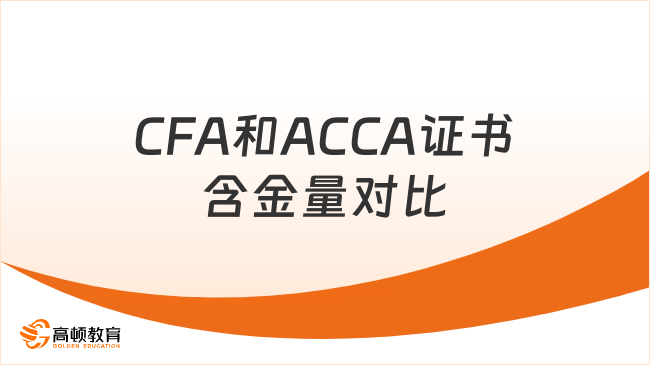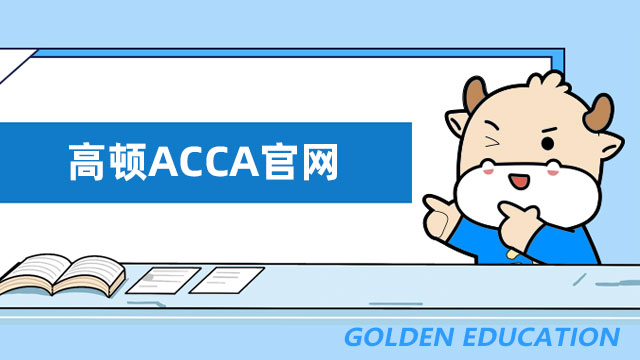ACCA考试:P7-2011年6月考官点评文章
Examiner’s report
P7 Advanced Audit and Assurance
June 2011
General Comments
Candidates’performance in the June 2011 P7 paper was unsatisfactory. The paper wasthe first to be set in a new style (explained in Examiner’s articles inJanuary 2011). Candidates did not appear to find the new styleproblematical. However, candidates’ lack of ability to apply theirknowledge to the scenarios provided continues to contribute to the lowsuccess rate for this paper. And unfortunately many candidates simplyfailed to answer the specific question that had been set.
Theexamination comprised two compulsory questions in Section A, and threequestions in Section B of which two should be attempted. Both Section Aquestions were based on detailed scenarios, and contained severalrequirements covering different syllabus areas.
Each optional 18mark question in Section B included a short scenario, and severalrequirements. Of the section B questions, question 3 was the mostpopular, and question 5 the least popular.
Similar factors as detailed in previous examiner’s reports continue to contribute to the unsatisfactory pass rate:
? Failing to answer the specific question requirements
? Not applying knowledge to question scenarios
? Not explaining or developing points in enough detail
? Lack of knowledge on certain syllabus areas
? Illegible handwriting.
Therest of this report contains a discussion of each question,highlighting the requirements that were answered well, and the areasthat need improvement.
Specific Comments
Question One
Thisquestion was for 37 marks and involved a property development companywhich was a long-standing audit client. The candidate was placed in therole of a newly assigned audit manager, whose first task in requirement(ai) was to explain the matters that needed to be considered, and thefinancial statement risks relating to two issues. The planned auditprocedures in response to the risks identified were also required. Thisrequirement was for 16 marks. Candidates responded well to the new styleof question requirement, whereby the specific requirement was providedin an email from the audit partner. The wording of the requirementshould have been familiar as has been used in many past questions.
Mostcandidates recognised the loss-making nature of the contract describedin the scenario, and correctly calculated the loss, and the majoritythen went on to discuss the financial statement risk that profit wouldbe overstated if the loss were not recognised in full. However, havinggone this far, many candidates then went on to consider other potentialaccounting issues and different financial reporting standards, leadingto confused answers and often contradictory advice. The most commonexample here was where a candidate having stated that the loss should berecognised in full (“to be prudent”), they then went on to argue theopposite point in the next sentence - that according to revenuerecognition principles only a part of the loss should now be recognised.No conclusion was provided and the contradictory comments clearlydetract from the overall quality of an answer. Some candidates simplycould not decide which financial reporting standard was most relevant,and applied several or all of the following to the contract in question:provisions (IAS 37), property, plant and equipment (IAS 16),development costs (IAS 38), inventories (IAS 2) and investmentproperties (IAS 40). It was common to see answers of this typestretching over many pages, when all that was needed was a succinctdiscussion of the loss making contract in the context of IAS 11, whichcould be done in a few short paragraphs.
The other common problemwere answers which focussed on business risks rather than financialstatement risks, leading to long discussions of cash availability, thecompany’s reputation, and inevitably going concern problems.
Theprocedures recommended for the loss making contract were often too vagueto score credit, e.g. many candidates recommended that the architect’splans should be obtained, but did not say what the auditor should dowith them. Similarly, it was often recommended that the auditor shouldobtain the forecast of the development, but then failed to say whatshould be done with it. Candidates should note that obtaining a documentis not in itself an audit procedure.
The second issue inrequirement (ai) dealt with a significant business segment whichmanagement planned to sell, which should have lead candidates to discusswhether the business segment should be classified as a discontinuedoperation / held-for-sale disposal group at the year end. Mostcandidates did correctly identify this issue and could properly applythe IFRS 5 criteria to justify their answer. However, the same problemsas noted above for the loss making contract equally applied here – manycandidates seemed unsure which was the relevant financial reportingstandard, and went on to discuss disclosure as an event after thereporting date (IAS 10) and /or provisions (IAS 37). This wasted timeand meant answers were overly long and largely irrelevant. Fewcandidates could recommend any procedures other than “discuss withmanagement” or “review board minutes”- which are relevant but must beexplained to earn a mark. Again, some candidates continued theirobsession with going concern matters here, discussing at length whetherit was the right decision to sell off the business segment, and advisingmanagement to reconsider.
The UK and IRL adapted papers containeda different second issue – an operating lease which had characteristicsof an onerous contract. Many did identify the onerous contract butcould say little more than that a provision should be made. Many alsoignored the question and discussed the lease as if it were a financelease, leading to irrelevant discussion as to whether the asset inquestion was impaired. Again, there were a lot of discussions ofbusiness risks (not asked for), plenty of criticism of management’sdecision to purchase a new warehouse, and advice to potentially minimisethe losses incurred. Candidates really need to focus on audit issues .
Onthe whole, the answers to (ai) were unsatisfactory, with most lackingfocus and containing a lot of irrelevant discussion. Candidates did notneed to write a lot to score very well on this requirement, and it was ashame to see candidates wasting so much time on irrelevance. This showshow important it is to read the question carefully and to spend alittle time thinking and clarifying the audit issues instead of rushingto put pen to paper as soon as possible.
The second task, inrequirement (aii) required candidates to critically evaluate the auditplanning that had been prepared by the previous audit manager, for 11marks. Most candidates scored well on this requirement, especially giventhe wholly applied nature of the question and requirement. The ethicalissues in particular were usually well explained, the quality controlissues less so. Some candidates tended to use a logical approach –working through the scenario to discuss each issue in turn. However somecandidates talked generically about independence issues without reallyexplaining the point, e.g. just stating “familiarity is a problem”, “wemust be independent”, and there were many calls for the previous auditmanager to be disciplined for her “incompetence”. But on the whole thiswas one of the best answered requirements for many candidates.
Therewere 2 professional marks available in connection with requirement (a).Most candidates attempted the briefing notes format by including anappropriate heading and introduction. Candidates are reminded thatresources are available on ACCA’s website providing guidance on theimportance of professional marks.
Requirement (b) was for 8 marks,and dealt with related parties. Requirement (bi) required candidates toexplain the limitations which mean that auditors may not identifyrelated parties and related party transactions, for 4 marks. On thewhole answers were satisfactory, with most candidates able to explainthat knowledge is confined to management, and that transactions at nilvalue are impossible to detect from accounting systems. Some answersfound a variety of ways to say “they are difficult to find out about”without actually explaining the limitations. Requirement (bii) asked foraudit procedures specific to related party transactions described inthe scenario, for 4 marks. Answers were often unsatisfactory here, asmany candidates ignored the question requirement and just provided arote-learnt list of procedures to identify related party transactions ingeneral, not focussing on the transactions in the scenario. Even thosethat did think about the scenario provided inadequate procedures e.g.“check the lease is market rate”- but not explaining how the auditorshould do this.
Question Two
This question wasfor 27 marks, and was largely based on going concern. The answers tothis question were generally unsatisfactory.
The candidate wasplaced in a role as audit manager of a new client, with the first taskin requirement (ai) being to review draft extracts from financialstatements and a cash flow forecast to identify and explain matterswhich may cast significant doubt on the company’s ability to continue asa going concern. The majority of candidates seemed to ignore thisinstruction, providing an answer that did little more than work down thestatement of financial position, calculating the materiality of eachbalance, and discussing the accounting treatment of each item, sayingnothing about going concern. Only when turning to the cash flow forecastdid these answers say anything about going concern, and then thecomments were usually restricted to the likelihood of the companyreceiving a loan and a subsidy. Some candidates tended to get confusedwhen looking at the cash flow forecast and tried to apply financialreporting rules e.g. by arguing that the income from the governmentgrant should be deferred.
However, there were some sound answersfocussing entirely on going concern matters, providing relevantcalculations, e.g. the total amount of debt due to be paid in 12 months,and discussing ratios such as the current and quick ratios to providediscussion points. Some answers saw that the parent company would beunlikely to provide a further loan to its loss making subsidiary when italready has a loan advanced which is unlikely to be paid back, and thaton this basis surely the company could not continue in operations.
Thesecond task, in requirement (aii) was to recommend audit procedures tobe carried out on the cash flow forecast. Most candidates could provideat least a few well explained procedures – the most common focussing onthe loan from the parent company and the government grant. Someprocedures were not well explained e.g. “check the price of thefinancial asset” without saying how this could be done. Some answersprovided procedures for the assets and liabilities on the draftstatement of financial position, which was not asked for. Mostcandidates identified the extreme optimism of the cash flow forecast andthat the closing cash position was negative, but not many candidatescould recommend sound procedures to verify the claims of managementregarding cash receipts from customers, which was a key issue.
Finally,there were 2 professional marks available for requirement (a). Themajority of candidates attempted to achieve these marks by using anappropriate format but often no conclusion was provided.
Requirement(b) dealt with the impact of multiple going concern uncertainties onthe auditor’s report, for 7 marks. Although some candidates scored wellon this requirement, the majority again failed to answer the question asset, and discussed every conceivable auditor’s report that could beissued for a client with going concern problems. The question statedthat “the use of the going concern assumption is appropriate”, yet manycandidates ignored this and spent a lot of time discussing what shouldhappen if the use of the going concern assumption were NOT appropriate.Most candidates earned a few marks by discussing the use of emphasis ofmatter paragraphs, but often the description of the paragraph was brief.Only a minority correctly focussed their answers on the requirement formanagement to disclose significant uncertainties in the notes to thefinancial statements, and that the adequacy of these disclosures woulddrive the auditor’s opinion on the financial statements. Overall answerswere very inadequate.
The UK and IRL adapted papers contained adifferent requirement (b), which dealt with a new syllabus topic –auditing aspects of insolvency. Specifically the requirement was toexplain the procedures involved in placing a company into compulsoryliquidation (4 marks) and to explain the consequences for creditors,employees and shareholders (3 marks). Most candidates had obviouslystudied this new topic and consequently scored well. There was sometimesconfusion between compulsory and voluntary liquidation, and often theorder of payment of assets in the event of liquidation was incorrect.However, most candidates made a satisfactory attempt at thisrequirement.
Question Three
This was the most popular of the optional Section B questions, probably because 10 of the 18 marks available were related to audit acceptance and ethical issues – both of which are topics which candidates seem to be comfortable with. However, the remaining 8 marks dealt with the requirements of ISA 510 on opening balances, and unfortunately candidates’ obvious lack of knowledge of this syllabus area meant that for many this was actually an inadequate choice of question.
Requirement (a) involved a new potential new audit client, and candidates were asked to identify and explain the matters that should be considered in deciding whether to accept the audit appointment. Candidates who had practised previous similar exam questions would have been well prepared, and there were many sound answers. Candidates were comfortable in discussing the specific ethical issues relevant to the scenario including self-review, confidentiality and conflicts of interest, and it was good to see a good number of answers refer to the requirements of ISA 210 on audit preconditions, which had been the subject of a recent Examiner’s article.
Some answers were not made specific to the scenario, and discussed general matters such as resourcing, fees and engagement letters. It was interesting to see so many candidates being overly critical of the client’s part-qualified accountant, who was often accused of incompetence, lack of integrity, and even fraudulent activities. As all candidates taking this paper are themselves part-qualified accountants maybe a little more insight into this person’s role in the client’s accounting function would be appropriate.
Requirement (b) dealt with opening balances and was inadequately answered by the majority. Some candidates could explain the audit procedures required by ISA 510, but few could recommend more than a couple of specific procedures in relation to the opening balance of inventory as specified in the requirement. Many answers gave procedures for non-current assets, receivables and cash which were not asked for, and many forgot that the company in the question had not been audited before, leading to irrelevant discussion of “previous auditor’s working papers”. Many suggested impossible procedures e.g. “reperform last year’s inventory count” and very few picked up on the major issue of obsolescence given the company’s inventory comprise calendars and diaries.
Question Four
This was the second most popular of the optional questions, and focussed on due diligence. The scenario described a potential acquisition being planned by an audit client of your firm.
Requirement (a), for 6 marks, required an explanation of three benefits of an externally provided due diligence review to the audit client. This was reasonably well answered, though many answers were not made very specific to the scenario and tended to discuss the benefits of any due diligence review rather than an externally provided one. Also, a significant number of candidates provided more than three benefits, which was a waste of time.
Requirement (b), for 12 marks asked for additional information to be made available for the firm’s due diligence review. Answers were satisfactory, and the majority of candidates did not struggle to apply their knowledge to the scenario, usually providing some very focussed answers dealing well with the specifics of the question scenario. Examiner’s report – P7 June 2011
Most answers seemed to use a logical approach – working through the information provided to generate answer points, and this meant that on the whole most of the key issues from the scenario were covered in the answer. A small proportion of answers also included irrelevant discussions of the type of report that would be provided to the client, or a discussion of ethical issues which were not asked for.
Question Five
This was the least popular of the optional questions, focussing on audit reports and group audit issues. The scenario described a group audit in which the component auditors suggested a qualified audit opinion on a subsidiary’s financial statements due to an alleged material misstatement concerning a provision.
Requirement (a), for 10 marks, asked candidates to identify and explain the matters that should be considered and the actions that should be taken by the group audit engagement team in forming an opinion on the consolidated financial statements. Most candidates gained marks by calculating the materiality of the provision to the group and to the individual financial statements of the subsidiary. However, few determined the materiality of the component itself to the group.
Candidates are usually happy to be critical of auditors in question scenarios, but in this case when it was actually appropriate to raise concerns over the evidence (or lack of it) obtained to support the qualified opinion, very few answers tackled this issue. However, some candidates did waste time criticising the extract audit report that had been provided – this was not asked for – and implied that candidates had not read the question requirement at all. Only some candidates picked up on the fact that an adjustment could be made at group level to avoid any qualification in the consolidated financial statements, and that pressure could be put on the subsidiary’s management to adjust in the individual financial statements as well.
Few candidates provided any “actions” at all, which was unsatisfactory as some relatively easy marks could have been gained by suggesting a detailed review of the component auditors working papers, requesting evidence from the subsidiary’s management to support their accounting treatment, or discussing the matter with those charged with governance.
Requirement (b) asked candidates to explain the principle audit procedures that should be performed on the consolidation process, for 8 marks. Many candidates clearly knew the consolidation process very well, but had trouble expressing this knowledge in terms of audit procedures. Many answers simply described what should happen in a consolidation, and thought that by including the words “check” or “ensure” every so often that would be enough e.g. “check goodwill calculation”, “ensure all subsidiaries included” but didn’t actually say how these things should be done. However, despite these problems most answers were satisfactory. Taking a step back to consider the effectiveness of controls over the whole process was rarely considered.
The UK and IRL requirement (b) was different, and concerned a subsidiary that had been disposed of during the year. The requirement was to comment on the matters that should be considered and the evidence that should be found in a review of audit working papers. Candidates responded well to this, and most earned marks by calculating materiality, discussing the appropriate accounting treatment in the consolidated financial statements, and could provide several examples of relevant evidence.
Repeating a comment made in the previous Examiner’s report, answers to question 5 (a) were unsatisfactory, given that audit reports is a regularly examined syllabus area.
Conclusion C
As seen in previous sittings, what makes the difference between a pass and a fail script is usually the level of application skills which have been demonstrated. Candidates who answer the specific question requirement, and tailor their answers to the scenarios provided are likely to do well. At this sitting a large proportion of candidates simply failed to answer the actual question requirement, especially in Q2(ai).
UK and IRL candidates are reminded that the syllabus now examines International Financial Reporting Standards rather than UK and Irish accounting standards. Notes should not be made in answer booklets t about which accounting standards are being used in answering questions.
【整理版】ACCA各科目历年真题
真题高频考点,刷题全靠这份资料
acca全科学习思维导图
梳理核心考点,一图看懂全部章节
2023年acca考纲解析
覆盖科目重难点,备考按照计划走
- acca考试怎么搭配科目?
-
建议优先选择相关联的科目进行搭配报考,这样可以提高备考效率,减轻备考压力,1、F1-F4:为随时机考科目,难度较低,这里可以自行随意选择考试顺序。2、F5-F9:如果你的工作的和财务会计或者审计有关、或者你比较擅长财务和审计的话,推荐先考F7和F8。你可以选择一起考ACCA考试科目F7和F8或者先考F7(8)再考F8(7),这就要取决你一次想考几门。3、P阶段:选修科目中,建议企业首选AFM!第二部分科目进行选择,如果AA和SBR掌握学生更好,可以通过选择AAA,如果SBL掌握的好,可以自己选择APM。
- acca一共几门几年考完?
-
acca一共有15门考试科目,其中有必修科目和选修科目,考生需要考完13门科目才能拿下证书。
- acca一年考几次?
-
acca一年有4次考试,分别是3月、6月、9月和12月,分季机考科目是采取的这类四个考季的模式,而随时机考则是没有这方面的时间规定限制,可以随报随考。
- acca的含金量如何?
-
ACCA证书的含金量是比较高的,从就业、能力提升、全球认可等角度来说,都是比较有优势的证书,其含金量主要表现在以下几个方面:1、国际化,认可度高;2、岗位多,就业前景好;3、缺口大,人才激励。
-
ACCA机考中心考点地址 2023-10-30
-
CFA和ACCA证书含金量对比 2023-09-16
-
今年最透彻的ACCA考试科目解析 2023-09-16
-
CIMA和ACCA有什么区别?两者选哪个好? 2023-09-05
-
ACCA可以免考几门? 2023-09-01
-
ACCA报考条件!大学生能报考ACCA吗?在职人士也能报考ACCA吗? 2023-08-29
-
高顿网校ACCA论坛地址 2023-07-25
-
ACCA报名详细指南:点击了解ACCA考试的费用和流程! 2023-06-16
-
上海对外经贸大学会计专业如何?有没有ACCA免考? 2023-06-13
-
山东财经大学会计专业好不好?能考ACCA吗? 2023-06-13
-
宁波诺丁汉大学会计专业真实评价,有没有ACCA课程? 2023-06-13
-
安徽财经大学会计专业值得报吗?有ACCA方向班吗? 2023-06-13
-
2023年acca注册需要哪些材料?点击查看全套材料清单! 2023-05-11
-
2023年ACCA报考指南详细篇,从流程到费用全解! 2023-05-11
-
ACCA、CPA、CAT、IFA四大会计证书的含金量解析 2023-05-09
-
ACCA、CPA、CAT、IFA四大会计证书的含金量解析 2023-05-09
-
acca报名条件是什么?看看你符不符合要求! 2023-04-27
-
高顿ACCA官网 2023-03-31
-
不交ACCA年费会有什么后果? 2023-03-29
-
acca官网怎么找历年真题?详细步骤一览! 2023-03-10
-
长沙理工大学acca怎么样?好就业吗? 2023-02-23
-
acca考试考点2023年在哪些地方?报考前必看! 2023-02-23
-
CPA考试平均备考时间4年以上,然鹅ACCA却只用... 2023-01-04
-
2023年ACCA考试报名条件 2022-12-19
-
ACCA考试科目详细介绍 2022-12-19
-
acca考试介绍,报考2023年考试必看! 2022-12-06
-
英国国际注册会计师简介,附新手报考指南! 2022-11-23
-
ACCA官网登陆 2022-11-15
-
国际注册会计师acca证书详解,一文给你介绍清楚! 2022-11-11
-
12月ACCA考试报名入口及流程,速看! 2022-11-01
 更多服务
更多服务






































